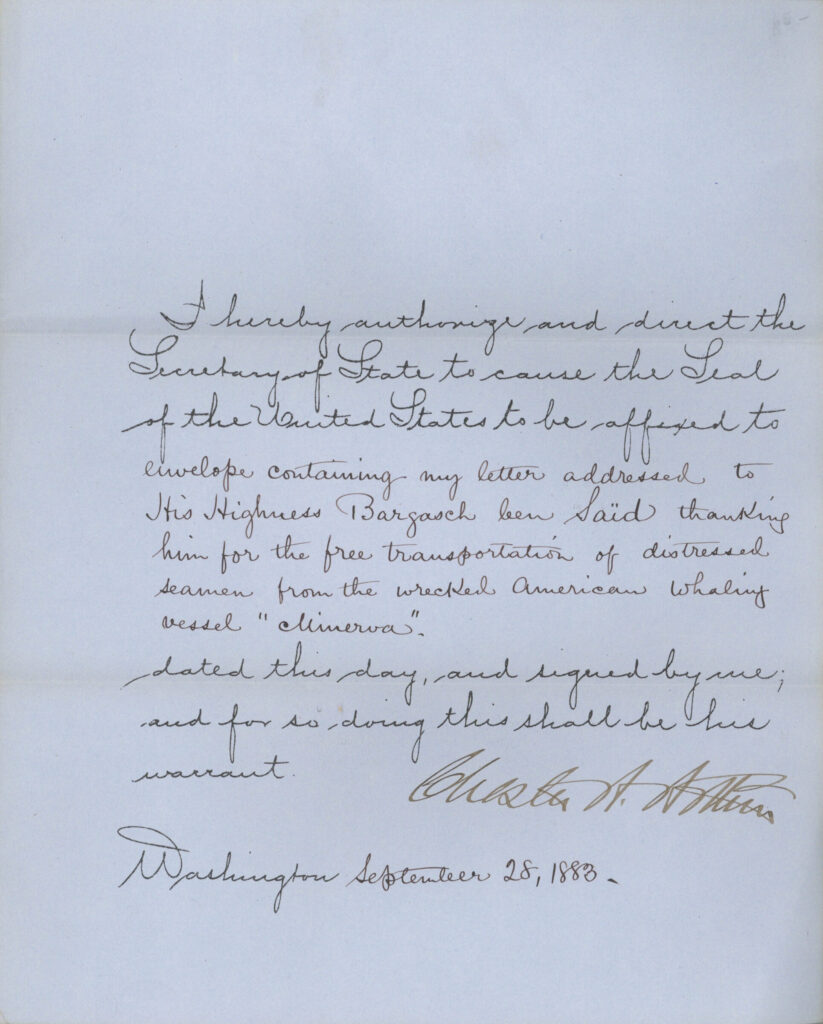President Chester A. Arthur Sends a Letter of State to an African Ruler, the Sultan of Zanzibar


- Currency:
- USD
- GBP
- JPY
- EUR
- CNY
Barghash bin Said was the second sultan of Zanzibar, who ruled Zanzibar from 1870 until his death in 1888. During his reign he signed an anti-slave trade treaty with Britain and saw his sultanate fall under the increasing control of Germany as the European scramble for Africa gathered pace, although ultimately, under...
Barghash bin Said was the second sultan of Zanzibar, who ruled Zanzibar from 1870 until his death in 1888. During his reign he signed an anti-slave trade treaty with Britain and saw his sultanate fall under the increasing control of Germany as the European scramble for Africa gathered pace, although ultimately, under the terms of an Anglo-German treaty, Zanzibar became a British protectorate.
The United States had a large whaling fleet in the 19th century, and it plied the world’s oceans. The American whaling ship Minerva was wrecked off the coast of Zanzibar, and Barghash saw to it that the Americans were transported to a place of safety.
As if to chronicle the voyage, a whale tooth scrimshaw of whaling scenes exists from the Minerva while cruising off Zanzibar.
Document signed, Washington, September 28, 1883, directing the Secretary of State “to cause the seal of the United States to be affixed to envelope containing my letter addressed to His Highness Bargasch ben Said thanking him for the free transportation of distressed seamen from the wrecked American whaling vessel Minerva…”
An uncommon order for sending a letter of state to an African leader.

Frame, Display, Preserve
Each frame is custom constructed, using only proper museum archival materials. This includes:The finest frames, tailored to match the document you have chosen. These can period style, antiqued, gilded, wood, etc. Fabric mats, including silk and satin, as well as museum mat board with hand painted bevels. Attachment of the document to the matting to ensure its protection. This "hinging" is done according to archival standards. Protective "glass," or Tru Vue Optium Acrylic glazing, which is shatter resistant, 99% UV protective, and anti-reflective. You benefit from our decades of experience in designing and creating beautiful, compelling, and protective framed historical documents.
Learn more about our Framing Services










































































































